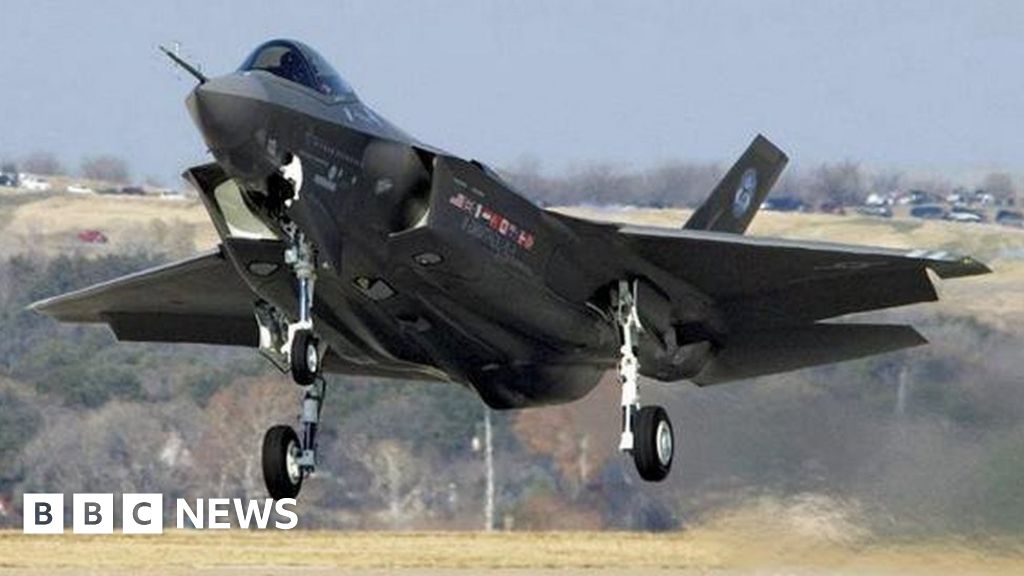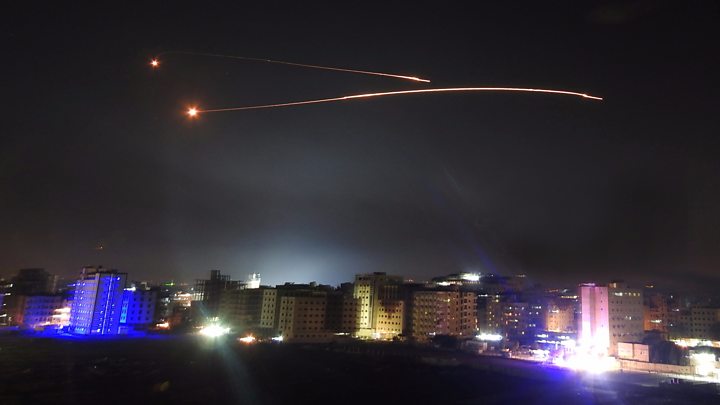F-35 Stealth Fighter Sees First Combat, In Israeli Operation

 Image copyright
Israel Defense Forces
Image copyright
Israel Defense Forces
The US-made F-35 stealth fighter has seen its first ever combat action, flying in an operation for the Israeli air force.
The air force chief showed an image of jets over Beirut, Lebanon, and said the planes had "already attacked twice on two different fronts".
Israel recently carried out scores of air strikes in Syria.
The F-35, from the world's priciest military programme, has been criticised both for cost and combat effectiveness.
Last year, Defence Secretary James Mattis had to defend the programme after then President-elect Donald Trump tweeted criticising its huge price, said to be close to $100m (£74m) per plane.
'Game-changer'
Maj Gen Amikam Norkin told heads of 20 foreign air forces meeting in Israel: "We are flying the F-35 all over the Middle East and have already attacked twice on two different fronts." He did not specify the targets.
"You know that we just won the Eurovision with the song 'Toy.' Well, the F-35 is not a toy," he said.
Israel, the first country outside the US to acquire the single-seat fighter, has received nine of the 50 F-35s it has so far ordered, and could take up to 75.
In Israel it is referred to by its Hebrew name "Adir" (Mighty). The jets are believed to be the F-35A variant - conventional takeoff and landing.
The BBC's Tom Bateman in Jerusalem says Israel's claim to have used it in an operational strike even before the Americans may be designed as a further show of military strength, as it believes elite Iranian forces are trying to entrench themselves in Syria to threaten Israel.

Media playback is unsupported on your device
Israel said its recent air strikes inside Syria targeted Iranian military infrastructure, in response to rocket fire aimed at Israeli military positions in the occupied Golan Heights.
Iran has hundreds of personnel in Syria, who it says serve as military advisers to the Syrian army. It has also sent thousands of volunteer fighters in support of the Syrian government.
The US has given Israel more military aid than any other country in the world - currently around $4bn a year - and its laws on arms sales require that Israel always maintains military superiority in the Middle East.
F-35: Why its maker says it's so advanced
- Developed by Lockheed Martin and first flown in 2006, the main reason for the fighter is its versatility, projected to serve the US Air Force, Marine Corps and Navy in one design
- Three variants: conventional takeoff (A); short takeoff and vertical landing (B) and carrier-based catapult (C)
- Stealth is clearly a key factor, its airframe and design materials allow pilots to penetrate areas without being detected by radar
- This gives it a small radar cross-section, which is said to allow it to engage enemy aircraft before they see it. A helmet-mounted display system means the jet does not have to be pointing at its target to fire weapons
- But it's the sensors, communications and avionics that it trumpets the most - data is shared immediately with operational commanders, and pilots can track the enemy, jam radars and thwart attacks
Israel has praised the Lockheed Martin F-35 as a "game-changer".
This may not even be its first use by Israel. Its military is often quiet about its operations and there were reports that the stealth fighter had been used operationally as early as January last year.
The US has certainly put a lot of faith in a programme that is expected to run through to 2070 and is projected to cost $1.5tn by then.
However, it has also come in for heavy criticism and not just over the price.
An influential military blog in 2015 reported that the F-35 lacked manoeuvrability and was unable to beat an F-16 in a dogfight. It was also reported to have cockpit visibility issues.
Analysts say the emphasis on stealth capabilities may have compromised air-to-air effectiveness.
From Chip War To Cloud War: The Next Frontier In Global Tech Competition
The global chip war, characterized by intense competition among nations and corporations for supremacy in semiconductor ... Read more
The High Stakes Of Tech Regulation: Security Risks And Market Dynamics
The influence of tech giants in the global economy continues to grow, raising crucial questions about how to balance sec... Read more
The Tyranny Of Instagram Interiors: Why It's Time To Break Free From Algorithm-Driven Aesthetics
Instagram has become a dominant force in shaping interior design trends, offering a seemingly endless stream of inspirat... Read more
The Data Crunch In AI: Strategies For Sustainability
Exploring solutions to the imminent exhaustion of internet data for AI training.As the artificial intelligence (AI) indu... Read more
Google Abandons Four-Year Effort To Remove Cookies From Chrome Browser
After four years of dedicated effort, Google has decided to abandon its plan to remove third-party cookies from its Chro... Read more
LinkedIn Embraces AI And Gamification To Drive User Engagement And Revenue
In an effort to tackle slowing revenue growth and enhance user engagement, LinkedIn is turning to artificial intelligenc... Read more

